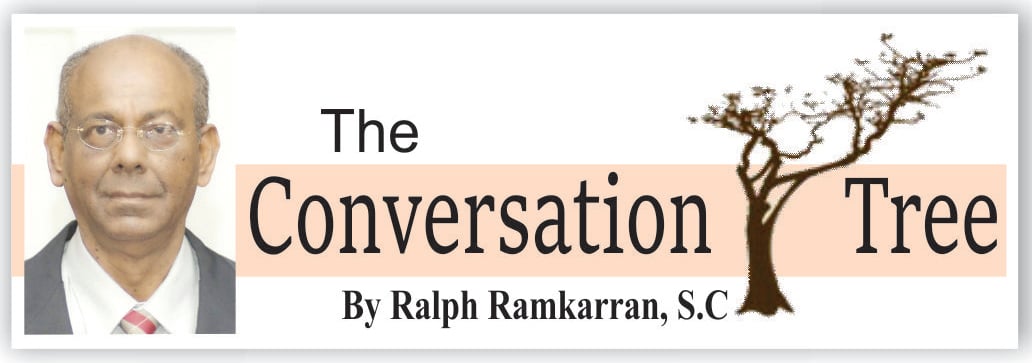 Universal adult suffrage, with its promise of Independence and social justice, gave rise to popular participation of workers and farmers in active politics. These, along with professional and small business owners, were mobilized by the PPP. The dominant foreign business operatives, their allies in the big business community and the high bureaucracy, formed the ruling elite. It was this group which prevailed upon the British Government to suspend the constitution of British Guiana in 1953.
Universal adult suffrage, with its promise of Independence and social justice, gave rise to popular participation of workers and farmers in active politics. These, along with professional and small business owners, were mobilized by the PPP. The dominant foreign business operatives, their allies in the big business community and the high bureaucracy, formed the ruling elite. It was this group which prevailed upon the British Government to suspend the constitution of British Guiana in 1953.
This distinct ruling class was politically organized in 1961 by the United Force (UF). Its strong pro-business and anti-communism attracted an alliance with the Roman Catholic Church. It attracted some popular support, including from Amerindians and some small business owners. The UF assisted the PNC to power in 1964 by joining it in a coalition government. But by then the local business class had begun to close their businesses and migrate because of the political violence between 1962 and 1964 and the departure in 1966 of the British, who they saw as their protectors. By 1968, the rigging of the first elections by the PNC, the decline that the UF experienced in 1964, to 12 percent from 16 percent in 1961, accelerated. The old ruling class was on its way out and knew it. Peter D’Aguiar, the leader of the UF retired from politics.
In the 1970s, the privately-owned colonial economy gave way to the nationalized colonial economy. The ‘bureaucratic bourgeoisie,’ an emergent class defined by the PPP, replaced the old ruling class. The bureaucratic bourgeoisie, aligned to the PNC, comprised the elite groups that made up the top echelons of the political establishment, nationalized industries, public service and the disciplined service. These were able and talented groups but restrained by the doctrine of party paramountcy, the absence of democratic accountability, and the failure of the economy in much of the 1970s, for whatever reasons. The growth and development of this class was probably the single most important reason, apart from historical factors, for the failure of an African Guyanese business class to develop. All the African Guyanese talent was drawn to service in the bureaucracy and economic management, not private economic investment. An African business class sputtered but did not develop. Indian business, though reduced, retained a base in rice and trade, ready to expand when the opportunity arose, as it did.
By the time the PPP/C entered government in 1992, ‘structural adjustment’ of the Guyana economy and debt forgiveness were already in full swing. Privatisation of nationalized businesses and the opening up of the economy to local and foreign investment were already introducing new elements in Guyana’s class structure. The increasing availability of loans and grants resulted in increased government spending by several times. These developments resulted in a growing elite of almost exclusively Guyanese Indian businessmen who formed the backbone of a new bourgeois elite. Not only did it continually expand in size during the years of the PPP/C in government, but a section of this group took the leadership of the private sector which forged good relations with the PPP/C governments. It should not be surprising that a private sector body would find common cause with PPP governments which had become decidedly favourable to private sector interests. During the elections crisis in 2020, a close examination would reveal that the forces that were arrayed against each other were the bureaucracy and its allies and the private sector and its allies. This alignment could also be detected during prior upheavals. Of course, the sub-stratum of all of these developments is the corrosive influence of ethnicity in politics.
The discovery of oil and the rapid increase of local and foreign investment are producing an equally rapid increase in the size and influence of the business class, which includes foreign elements in Guyana within recent years. This influence extends to the leadership of both political parties, as the recent sojourn in office of APNU+AFC, and the evolution of the PPP, have clearly demonstrated. In any event, there is little distinction between the approaches of both parties in relation to private sector development. It should be noted that at business conferences in Guyana, which are addressed by Government, the Ministry of Labour has never been invited to speak to policies regarding the rights of labour, which the Government expects the private sector to observe. In fact, during the period of the dismantling of the nationalized economy and the growth of the market economy, the influence of the trade union movement has declined considerably. This is no accident.
Guyana’s class trajectory is clear for anyone to see. The dominance of the oil and gas sector, spawning a wide spread of businesses across the board, would inevitably create a dominant business bourgeoisie in whose interests the government, any government, would deploy its policies. If Guyana succeeds in having a government as a neutral arbiter between capital and labour, it would be the first in history to achieve this. However, modern developments suggest that within a dominant market system, with a dominant business class, (at one time, not so long ago, we referred to it as ‘the ruling class’) a government can limit the exploitation of workers and peasants and ensure for them a just share in the wealth of the country.
This column is reproduced with permission from Ralph Ramkarran’s
blog, www.conversationtree.gy





